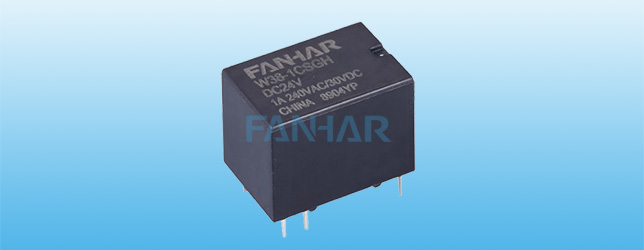Electromagnetic relays are generally composed of return springs, coils, iron cores, armatures, and contacts. When the switch is closed, a certain voltage is applied to both ends of the coil, and a certain current will flow in the coil, thereby generating an electromagnetic effect, and the armature will overcome the pulling force of the return spring and attract to the iron core under the action of electromagnetic attraction. In this way, the moving contact of the armature is driven to engage with the static contact (normally open contact), and the red bulb lights up at this time. When the coil is powered off, the electromagnetic suction also disappears, and the armature will return to the original position under the reaction force of the spring, so that the moving contact and the static contact (normally closed contact) are attracted, and the green light bulb is at this time. lights up. In this way, the suction and release are achieved, so as to achieve the purpose of conducting and cutting off in the circuit.

What are the main parameters of electromagnetic relays? We learn from five aspects
1. Rated working voltage
The rated working voltage refers to the voltage required by the coil when the relay is working normally. Depending on the model of the relay, it can be either AC voltage or DC voltage. The working voltage applied to the relay coil should generally not exceed 1.5 times the rated working voltage.
2. Pick-up current
The pull-in current refers to the minimum current that the relay can generate the pull-in action. In normal use, the current through the coil must be slightly larger than the pull-in current, so that the relay can work stably.
3. DC resistance
DC resistance refers to the DC resistance of the coil in the relay. The size of the DC resistance can be measured with a multimeter.
4. Release current
The release current refers to the maximum current that the relay produces the release action. When the current of the relay coil is reduced to the release current value, the relay will return to the release state. The release current is much smaller than the pickup current.
5. Contact voltage and current
Contact voltage and current, also known as contact load, refer to the voltage and current that the relay contacts are allowed to withstand. When in use, this value cannot be exceeded, otherwise the contacts of the relay are easily damaged.
